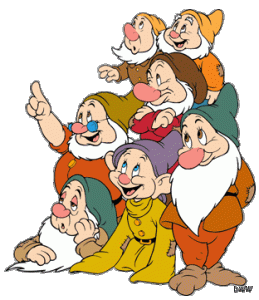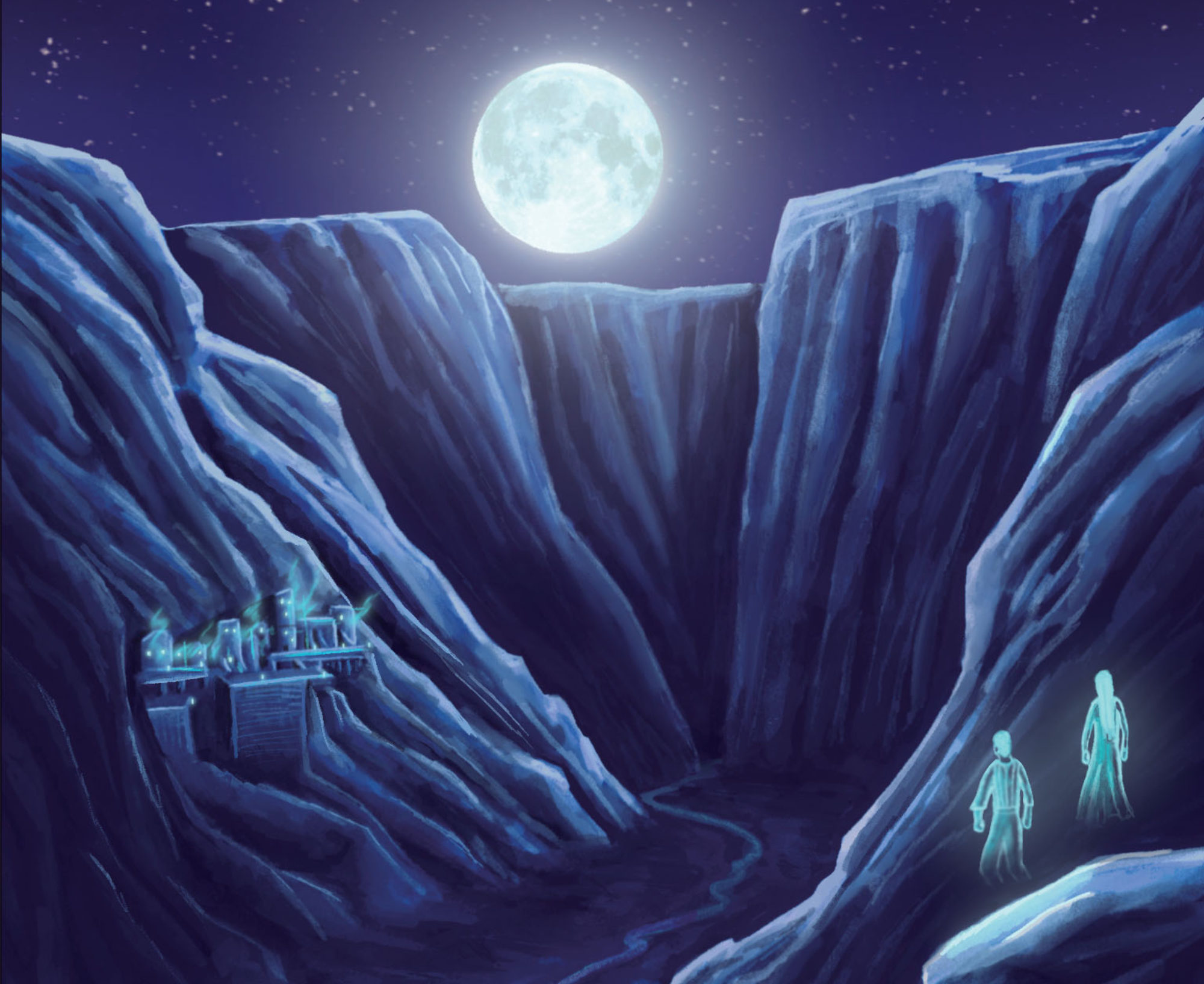Some of you may find this installment more interesting than the last one; most of you will find it less so. I’ll try to keep it a little shorter and less surly.
This post is technically about the events of the movie that could never occur in Middle-earth, but most of those infractions involve Tauriel in some way. I think the movie would have been…almost acceptable if her entire character arc had simply been omitted (not least because there would hardly be any movie left). I don’t want to be unfair; there is a time and place for non-canonical character insertions…I think. None are coming to mind right now, but I’m sure there are situations where that kind of thing could be done well. However, Tauriel’s insertion is not one of those. She’s pretty and competent, but she doesn’t belong in Middle-earth, and nor do any of the shenanigans in which she is involved. The problem lies not in her character per se, but in the fact that Peter Jackson didn’t put in the effort to create believable, contextual scenarios for the universe he is adapting defiling. Without further ado, here are the main offenses.
1. The awkward and painful romance between Tauriel and Kili
This alone is enough to catapult a worthy Tolkien fan out of the story. I’m sure Jackson thinks he is providing some sort of meaningful social commentary, but it does not make sense in this universe. Elves and Dwarves generally cannot stand each other, due in part to a long and complicated history; but beyond that, romantic feelings such as those hinted at in the movie are fundamentally contrary to the two races’ natures.

(Image courtesy of EmilyEretica)
It’s time for a little Middle-earth history/theology lesson. This is all in The Silmarillion, if you don’t want to take my word for it.
Eru, or God, delegated the rule of Arda (Middle-earth, etc.) to fourteen helpers, seven men and seven women. They were sort of like angels with great power. One of these was Aulë, the master of all crafts. In the beginning, Aulë was anxious for Eru to create men and Elves so he could love them and teach them his skills. He was so impatient that he created the Seven Fathers of the Dwarves based on hazy ideas of what Eru’s creations would look like. He named them Doc, Sleepy, Grumpy, Bashful…I’m kidding, of course. They were probably all grumpy.

Eru found out what Aulë was doing, of course, and explained that the Seven Dwarves (hehe) had no wills of their own—Aulë could control them, but when he wasn’t thinking about them, they stood still and lifeless. Apparently Aulë hadn’t considered this, but he acknowledged his foolishness and offered to either give the Dwarves to Eru or to destroy them. Instead, Eru gave the Dwarves true life; however, he didn’t change them in any other way, and told Aulë, “often strife shall arise between thine and mine, the children of my adoption and the children of my choice.” Because Elves (and men) and Dwarves had different creators, their natures were such that they wouldn’t easily get along.
Biologically, this story has some interesting implications. Elves and men are obviously of the same species, because they produce fertile offspring. But I doubt Aulë took that sort of thing into account when he created the Dwarves. Indeed, it seems Elves felt no attraction: the Elvish word for “Dwarves” translates to “the stunted people,” and they often refer to them as “unlovely.” Dwarves appear to feel the same, for the most part. I want to keep this blog g-rated, but let’s just say that if an Tauriel and Kili really formed a romantic relationship, a sane Elf would probably consider Tauriel more similar to Pasiphaë than to Luthien.
…and that’s about all I want to say about that. Moving on!
2. Kili is wounded with a Morgul arrow (and Tauriel is sad!)
My main beef with this scene is that ordinary rank and file orcs get to carry Morgul weapons around and use them at will. Think about it: you have this awesome weapon that can turn anyone into a wraith. If these weapons were widely available, why wouldn’t every single orc, troll, and Nazgul have one? Why is it that only Sauron’s most trusted servant has one in LotR? If these weapons are rare, why not save the one they have for, say, Thorin?
Maybe there’s an alternate explanation: the orcs that aren’t supposed to exist squandered all the Morgul-brand weapons while chasing random Dwarves through the wilderness, until Sauron put his (hypothetical) foot down. “This is why we can’t have nice things!” the Dark Lord hissed. “No more Morgul weapons. Henceforth, they may be used by Nazgul only.”
3. Tauriel knows fancy Elven magic healing spells
Okay, so this is something that probably irked me more than anything else in the movie, and really drove home the “bad fanfiction” vibe. To find what’s wrong with this scene, we have to do a little digging. Tolkien wrote an essay entitled “The Laws and Customs Among the Eldar” (Elves) that was not published during his lifetime. Still, when creating an original Elven character, it might have made some sense to read up on Elven culture, right? Even I read that essay before writing any of my terrible Silmarillion fanfiction (no, I won’t let you read it).
Anyway, the essay offers some interesting insight into the daily lives of Elves, including gender roles, career choices, marriage customs, naming, and even a form of reincarnation. For this discussion, I’ll focus on the first two topics.
With few exceptions, there are no rigidly-defined gender role divisions (there’s a law that only women can make lembas, for example), but there are activities that women or men generally prefer. In “Laws and Customs,” Tolkien gives an example of this:
“For instance, the arts of healing, and all that touches on the care of the body, are among all the Eldar most practiced by the [women]; whereas it was the elven-men who bore arms at need. And the Eldar deemed that the dealing of death, even when lawful or under necessity, diminished the power of healing, and that the virtue of the [women] in this matter was due rather to their abstaining from hunting or war than to any special power that went with their womanhood. Indeed in dire straits or desperate defence, the [women] fought valiantly, and there was less difference in strength and speed between elven-men and elven-women that had not borne child than is seen among mortals. On the other hand many elven-men were great healers and skilled in the lore of living bodies, though such men abstained from hunting, and went not to war until the last need.”

(Image courtesy of Darkchylde)
In LotR, we see Elrond acting as both a warrior and a healer, but the two incidents happen 3025 years apart. He’s had plenty of time to retire from the battlefield and develop the skills needed to (partially) heal Frodo of his own Morgul wound. In contrast, the fact that Tauriel is the captain of Thranduil’s guard (we’ll gloss over the fact that an Elf woman is highly unlikely to have such a job) implies that she wouldn’t have spent much time studying the healing arts, beyond perhaps minor first aid that might come in handy in her line of work—she certainly wouldn’t have developed the kind of skill to treat an injury as serious as Frodo’s or Kili’s. Even if she had extensively studied this level of healing, because she spends so much time in the “dealing of death,” she wouldn’t have the power necessary to apply her knowledge—technique isn’t everything, it seems.
Concluding Remarks
Look, I get it. The Hobbit has no prominent female characters, and only a few are mentioned specifically (Bilbo’s mother Belladonna, Girion’s wife, Fili and Kili’s mother, Gollum’s grandmother—let me know if I’m missing anyone). It would be absurd to expect three movies (three movies?!) to be cast entirely male. For this reason, I didn’t mind seeing Galadriel in An Unexpected Journey (though the portrayal of her character and her mind powers left something to be desired) or even giving Bard daughters (though they didn’t really do anything). But the Tauriel arc is just a farce. Furthermore, aren’t we all tired of love triangles already?
I rarely find it appropriate to give stinging criticism like this without any suggestions for improvement; lest I appear hypocritical, I’ve come up with some ways the screenwriters could have made Part Two more woman-friendly without dismantling the plot so abominably:
- Show us Thranduil’s wife. She’s never mentioned by Tolkien, but she must be quite a cool lady to put up with her hot-headed husband and her air-headed son for centuries upon centuries. Show us more of Thranduil’s character through his interactions with his wife, and leave out that weird scene where half his face disappears.
- Use Galadriel again—in person. Look, the whole “Gandalf attacks Dol Guldur alone knowing it’s a trap” thing is utter bogus. I don’t want to info-dump from the books again, but Appendix B of LotR says that Saruman (the head of the White Council, who met in Part One) has agreed to launch an attack. This attack was very well planned, and Galadriel would probably have played an integral part—she’s overtly depicted as being there by several artists, and is even more influential in future attacks.
- Make Smaug a female. That, at least, wouldn’t require me to ignore everything I know about Elves.
Maybe all this blogging/complaining business is unproductive. Maybe I’ll go write my own screenplay, so that when these movies (movies? Plural?!) are inevitably remade, I can sell it to the producers and make millions. Heck, I’d give it to them for free just to stop Tolkien from rolling around that grave of his.

“This is why we can’t have nice things!” Lol.
Smaug can’t be female!
#benedictcumberbatch